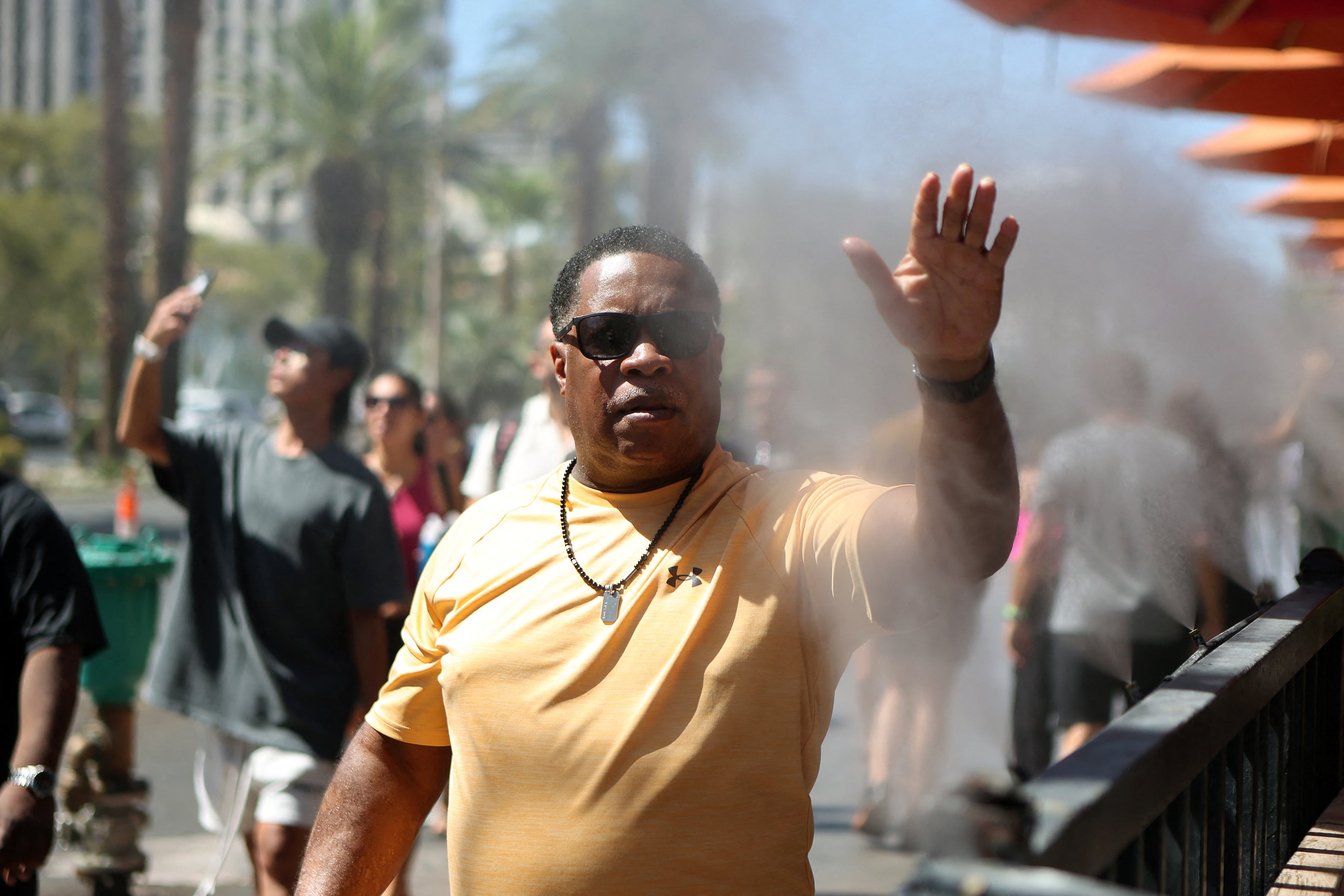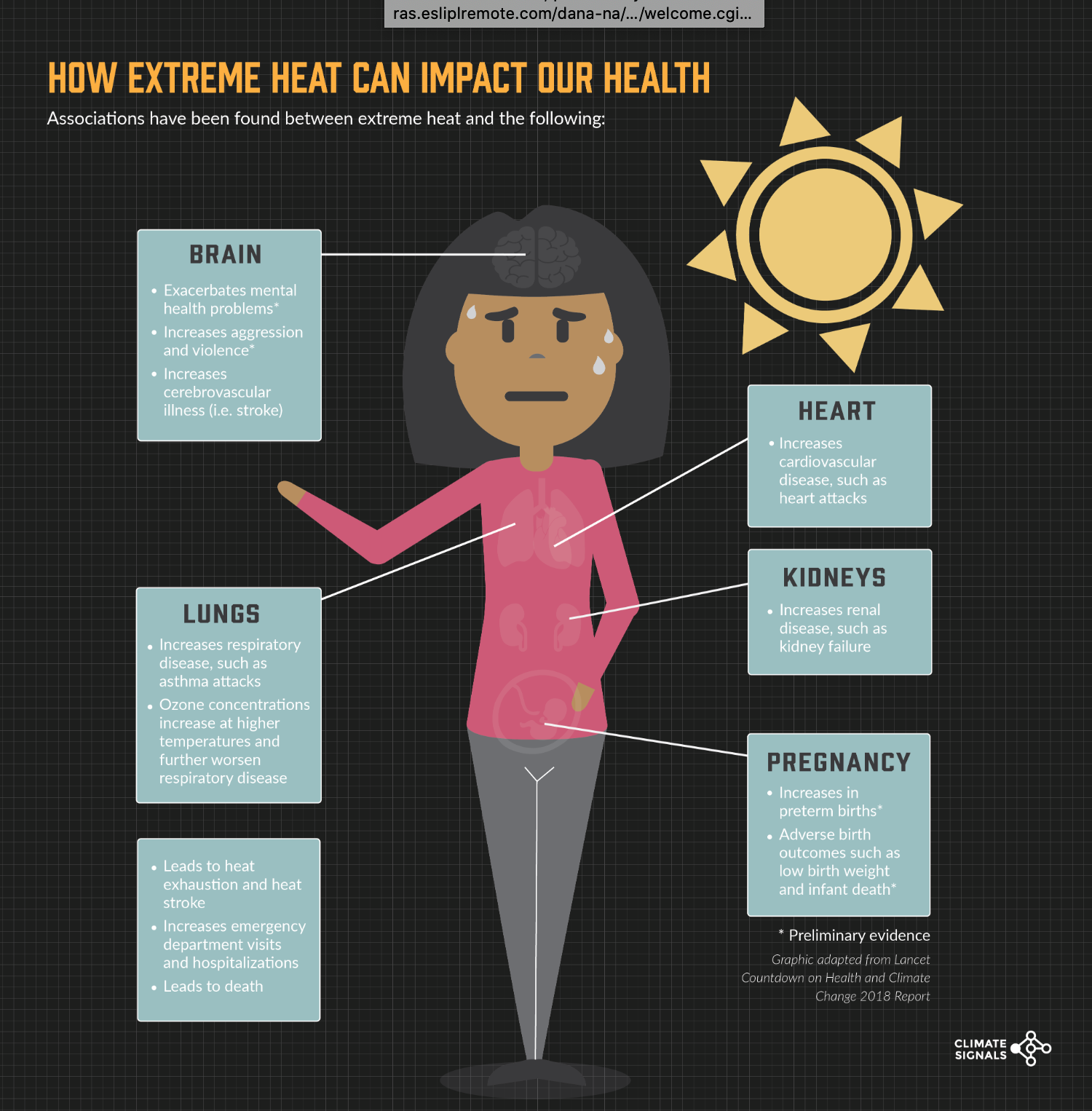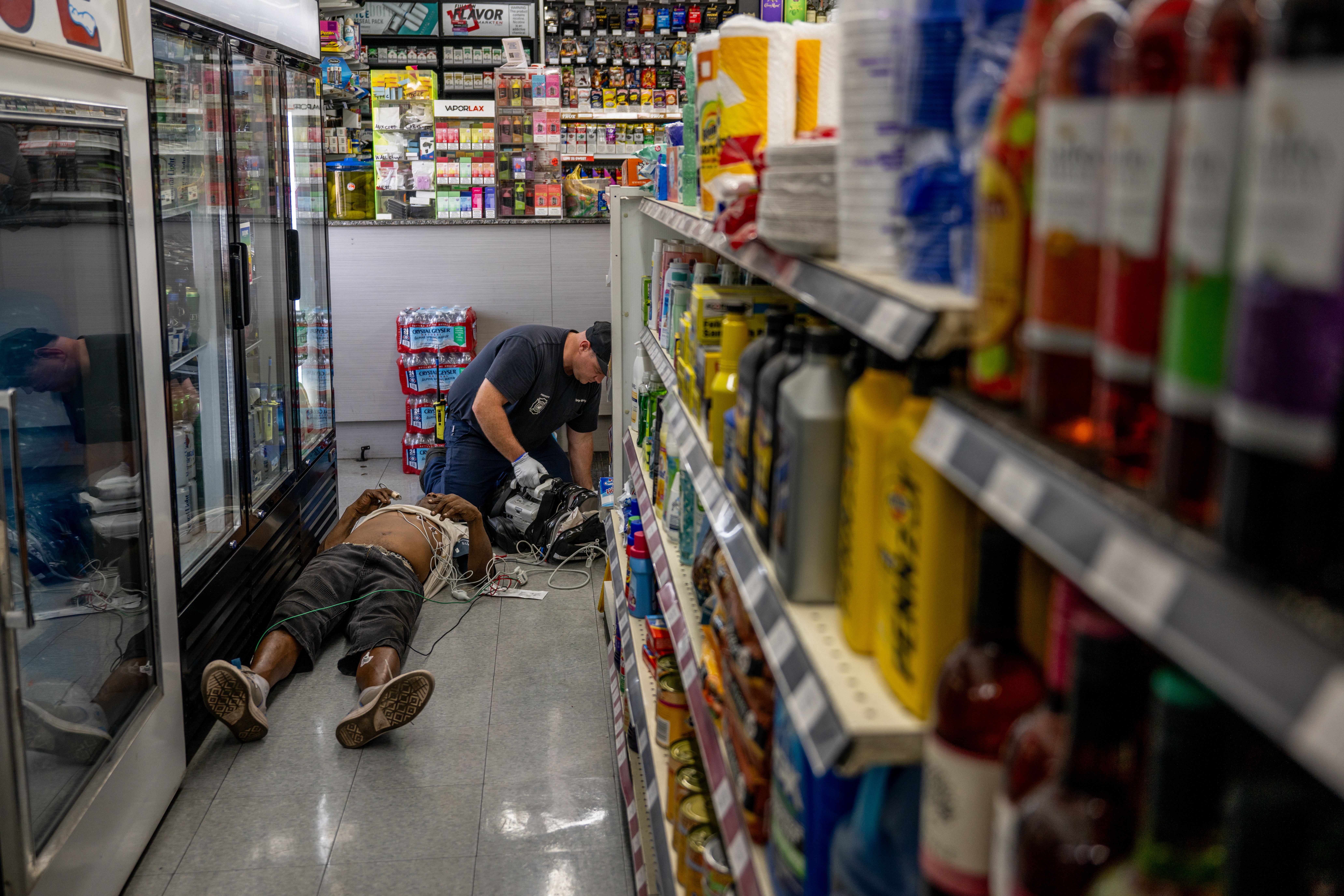From body bags of ice to pavement burn: US grapples with new extreme heat reality
While extremely hot summers are common in some US states, the current heat levels are unprecedented. Louise Boyle reports


Your support helps us to tell the story
From reproductive rights to climate change to Big Tech, The Independent is on the ground when the story is developing. Whether it's investigating the financials of Elon Musk's pro-Trump PAC or producing our latest documentary, 'The A Word', which shines a light on the American women fighting for reproductive rights, we know how important it is to parse out the facts from the messaging.
At such a critical moment in US history, we need reporters on the ground. Your donation allows us to keep sending journalists to speak to both sides of the story.
The Independent is trusted by Americans across the entire political spectrum. And unlike many other quality news outlets, we choose not to lock Americans out of our reporting and analysis with paywalls. We believe quality journalism should be available to everyone, paid for by those who can afford it.
Your support makes all the difference.As unrelenting, record-breaking temperatures continue across many states, pressure is mounting on US healthcare systems due to an increasing number of people in heat distress coming through their doors.
In the Southwest, doctors are relying on tried-and-tested measures such as body bags packed with ice to quickly bring down dangerously high body temperatures.
Doctors at Memorial Hermann Medical Center in Houston, Texas, told The Independent that there has been an increase in the number of patients presenting with heat-related illnesses including heat stroke, which can be potentially fatal if not treated rapidly.
“Our affiliated providers rely on the tools they have readily available in the emergency department and the latest, evidence-based research – including but not limited to ice baths, ice-filled packs, fans, circulating cold liquids into the body, and more – to effectively bring down body temperatures as quickly as possible and save lives,” a representative wrote in an email.
Dr Frank LoVecchio at Valleywise Health Medical Center in Phoenix – where the temperature has been above 110F for three weeks – told CNN that emergency care was needed three to four times each shift to save the lives of patients with heat-related conditions. Brain damage can occur at body temperatures above 107F in a matter of minutes.
Temperatures have entered uncharted territory around the world this summer due to an emerging El Niño pattern and the ever-worsening climate crisis driven by the burning of fossil fuels.
June was the planet’s hottest month in human history, and July looks set to at least match that record.
“This is our new normal – but countries and people can take steps to mitigate the harms,” said Hans Kluge, regional director for the World Health Organisation in Europe.
Nine locations have recorded temperatures of 122F (50C) in recent weeks, according to climatologist Max Herrera.
“At 50C it is hard to cool down because more heat is entering the body than leaving it, due to the differential in temps between body and air,” Prof Lewis Halsey, from Life and Health Sciences at the University of Roehampton London, whose has researched the impacts of extreme heat on the heart, told The Independent via email.

“This is particularly acute when the air is somewhat humid because then sweating to lose heat through evaporation doesn’t work – sweat doesn’t evaporate if the air is already wet.”
In the US, more than 107 million people were under alerts this week as temperatures remained in triple-digits in Arizona, Texas, Nevada, and California with parts of the Southeast and Gulf Coast expected to follow.
While hot summers are common in many of these states, the current heat levels are unprecedented. And since heat has “fallen into a governance gap historically”, as Phoenix’s “chief heat officer” David Hondula told The New York Times on Thursday, public health communities and lawmakers are racing to catch up to the new reality.
In cities across the US, cooling centres are now the norm along with a jump in high-pressure misting systems, hydration stations and infrastructure specifically designed to provide shade – particularly in concrete and glass-heavy downtown areas which retain higher temperatures as so-called “urban heat islands”.
Yet these measures have not stopped people turning up at hospitals suffering from contact burns caused by searing pavements, dehydration, heat exhaustion and heat stroke along with myriad life-threatening conditions including strokes, heart attacks, kidney failure and respiratory conditions. Extreme heat is also known to exacerbate mental health problems, and cause pregnancy complications.
Dr Neelima Tummala, clinical assistant professor of surgery at the George Washington School of Medicine and Health Sciences and co-director of GW’s Climate Health Institute, said that the number of medical professionals focused on the overlap between climate change and health problems has grown tremendously in the past five years.

“I think that [medics] are really recognizing how much their patients are being impacted by extreme heat,” Dr Tummala told The Independent.
“I definitely have increased the amount that I counsel patients on extreme heat and how to protect themselves, more than I ever thought I would have as an EMT physician.”
Heat causes more deaths in the US than all other climate-related disasters combined. It is incredibly deceptive – at times enveloping people in temperatures much higher than they realise when humidity is factored in.
Last year, the US set a new record of 1,708 deaths from heat-related causes, according to provisional data from the CDC. That figure – 1,200 more deaths than 20 years ago – is still likely to be massively underestimated.
Some groups are particularly vulnerable to extreme heat – children, pregnant people, the elderly, those with underlying health conditions and outdoor workers.
Marginalised communities face greater risks: Native American and Black communities have the highest rates of heat-related deaths in the past 20 years. Historically racist housing policies - such as redlining or construction of highways through Black neighborhoods – have played a role in creating “heat island” areas that can be up to seven degrees hotter than average.
But really, Dr Tummala points out, everyone is at risk from extreme heat.

“What’s safe outdoors for one person may not be the same for another,” she said. Alongside demographics, much depends on the level of physical activity: a construction worker, for example is going to face a lot more strain than someone going for a light stroll, for example.
“Heat puts stress on every organ,” she said. “If you previously had a heart attack or have high blood pressure then additional heat stress causes the heart to work extra hard, and is what increases the risk of another heart attack or developing heart failure.”
Children are at risk because they don’t tend to sweat as well as adults – one of the body’s essential cooling mechanisms - and are likely to be more active outdoors.
“A big concern with younger children is they may not be able to communicate when they're feeling really tired, stressed, or fatigued, things that we have sort of learned to identify as potential symptoms of heat stress,” Dr Tummala said.
Heatwaves are also a dangerous time for those who don’t have access to air conditioning - either because they cannot afford it in their home, or because they are living on the streets.
“This is one of the most essential tools for staying cool, especially during these extreme heat events,” Dr Tummala noted.
The US healthcare system averages 67,512 ER visits and 9,235 hospitalisations due to heat each year, according to the CDC.
Last summer, the Arizona Burn Center reported 85 admissions from heat-related burns caused by sidewalks and outside surfaces that can reach 180F with seven patients subsequently dying from their injuries. More than a quarter of patients were unsheltered.
“These injuries are serious but preventable,” said Dr Kevin Foster, Arizona Burn Center Director.
“External surface temperatures can reach 180 degrees Fahrenheit, and deep cutaneous burns can happen with only brief contact. Exposure often occurs in patients with impairments that prevent them from quickly removing themselves from such contact, leading to severe injury.”
The US is expected to experience 3F-12F of average temperature rise this century, depending on effectively the world tackles the climate crisis. It means that more frequent and prolonged heatwaves will become part of life for many.
Homes, workplaces and infrastructure urgently need to be adapted and people made more aware of the risks, climate and health experts have warned.
“It is more important than ever that we put in place measures to limit the harm on our health,” said Dr Modi Mwatsama, head of capacity and field development at the health research foundation Wellcome, wrote in an email.
“These can be simple solutions like providing shade and painting buildings white to reduce heat, to investing in early-warning systems for climate-sensitive infectious disease outbreaks such as cholera.”



Join our commenting forum
Join thought-provoking conversations, follow other Independent readers and see their replies
Comments